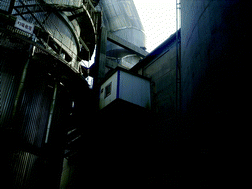Continuous monitoring of NO in flue gas based on wavelet decomposition
Abstract
In this paper, a new algorithm for nitric oxide (NO) measurement based on multi-scale wavelet

* Corresponding authors
a
State Key Lab of Precision Measuring Technology and Instruments, Tianjin University, Tianjin, China
E-mail:
Chizhang@tju.edu.cn
Fax: +86 022 27404778
Tel: +86 022 27402905
b School of Electrical Engineering, Tianjin University of Technology, Tianjin, China
In this paper, a new algorithm for nitric oxide (NO) measurement based on multi-scale wavelet

 Please wait while we load your content...
Something went wrong. Try again?
Please wait while we load your content...
Something went wrong. Try again?
C. Zhang, C. Sun and B. Liu, J. Environ. Monit., 2011, 13, 991 DOI: 10.1039/C0EM00514B
To request permission to reproduce material from this article, please go to the Copyright Clearance Center request page.
If you are an author contributing to an RSC publication, you do not need to request permission provided correct acknowledgement is given.
If you are the author of this article, you do not need to request permission to reproduce figures and diagrams provided correct acknowledgement is given. If you want to reproduce the whole article in a third-party publication (excluding your thesis/dissertation for which permission is not required) please go to the Copyright Clearance Center request page.
Read more about how to correctly acknowledge RSC content.
 Fetching data from CrossRef.
Fetching data from CrossRef.
This may take some time to load.
Loading related content
